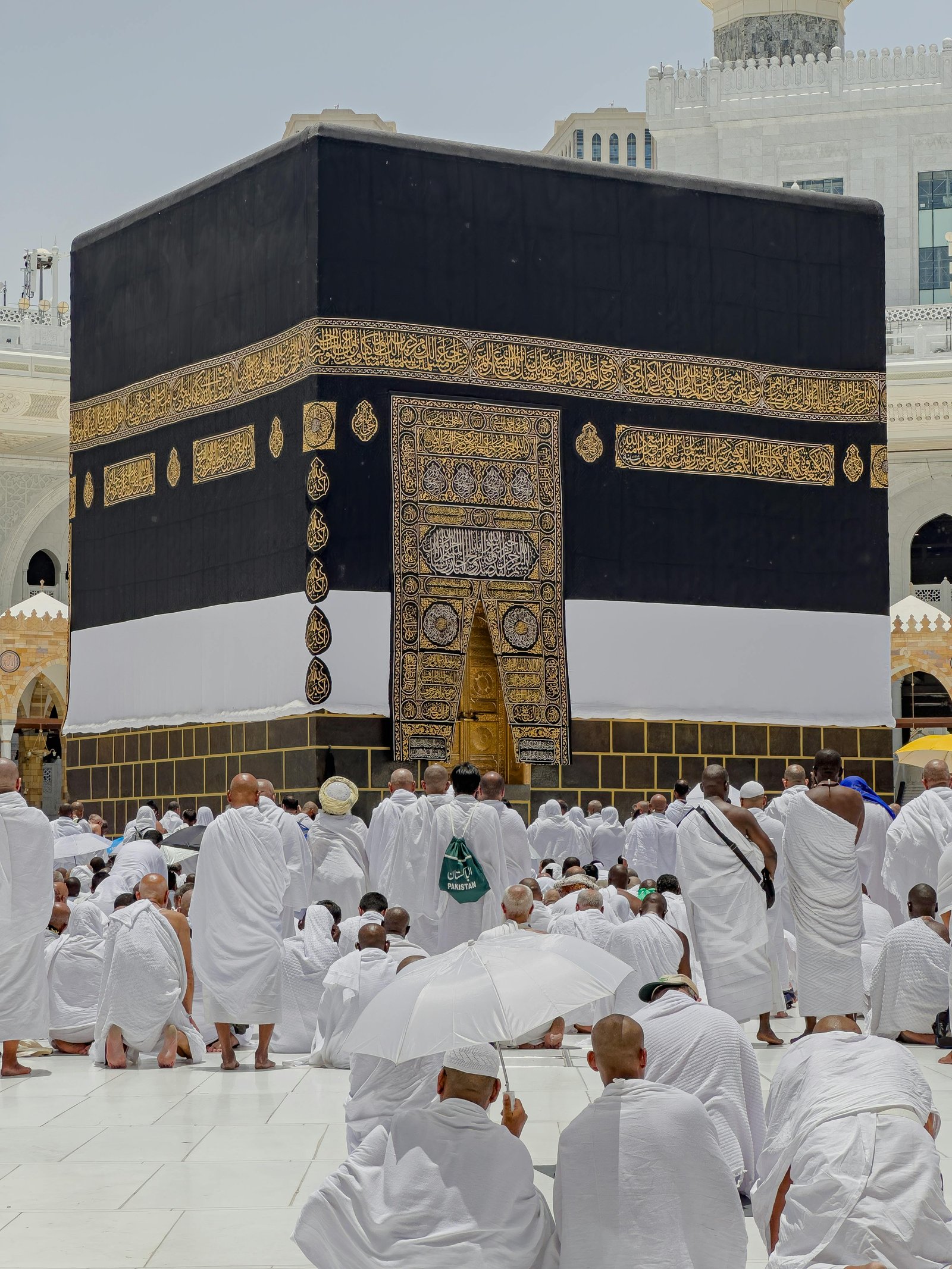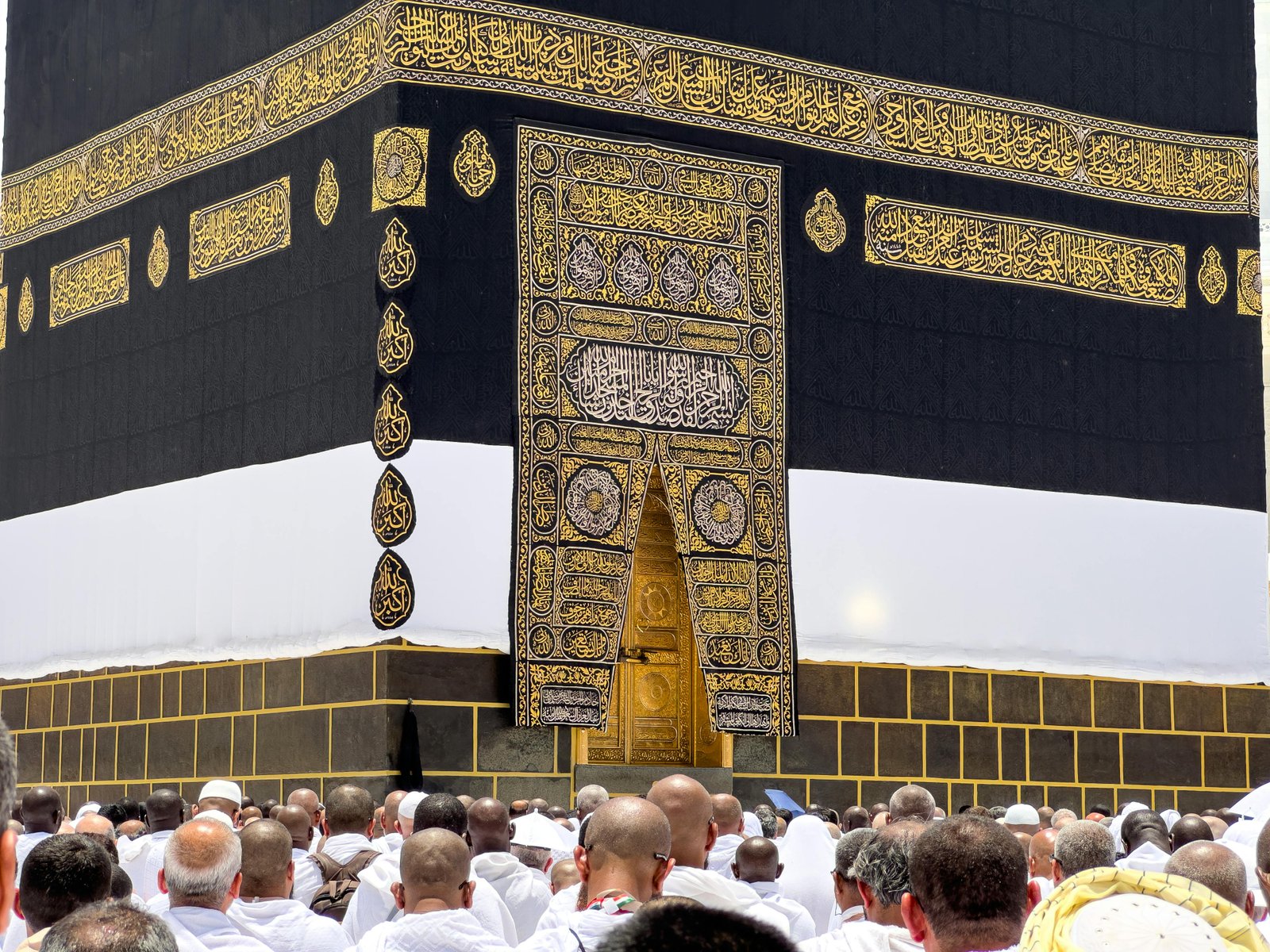What is the Difference Between Hajj Types?
In the Name of Allah, Most Gracious, Most Merciful.

Image by Flicker
All praise and thanks are due to Allah, and peace and blessings be upon His Messenger.
The Prophet (peace and blessings be upon him) said, “Islam is built upon five pillars: testifying that there is no true god except Allah and that Muhammad is the Messenger of Allah, performing Prayer, paying the Zakah, making the pilgrimage to the Sacred House (Hajj), and fasting the month of Ramadan” (Al-Bukhari)
The types of Hajj are as follows:
Tamattu`: At or before reaching the miqat (the place where one must enter ihram), the person enters into ihram for `Umrah only. He performs `Umrah first, then goes out of ihram until 8 Dhul-Hijjah, when he or she enters into ihram again for Hajj. This is the most common type for people from outside of Saudi Arabia.
iran: The person enters into ihram for both `Umrah and Hajj, and does not go out of ihram until the Day of Sacrifice (`Eid Al-Adha) at Mina. In this type of Hajj, the pilgrim has to stick to the restrictions of ihram for a longer period of time.
Ifrad: The person enters into ihram only for the Hajj and takes it off only on the Day of Sacrifice.
In his response to your question, Sheikh Ahmad Kutty, a senior lecturer and Islamic scholar at the Islamic Institute of Toronto, Ontario, Canada, states,
Tamattu`Hajj and qiran Hajj are two valid forms of Hajj; there is also a third one known as ifrad.
Let me explain: Hajj can be performed in any one of the three forms, namelytamattu` or qiran or ifrad.
1. Tamattu` means to resort to ease and comfort. Tamattu` Hajj is so called because in this form of Hajj, the pilgrim, while intending to perform both `Umrah and Hajj in one trip, does so by releasing himself or herself from ihram after performing the rites of `Umrah and thus taking a little rest and comfort before embarking on Hajj by resuming ihram for Hajj again on 8 Dhul-Hijjah.
2. Qiran means conjoining. Qiran Hajj is so called because in this form of Hajj, a pilgrim joins Hajj and `Umrah in a single ihram, thus forgoing the comforts oftamattu`.
3. Ifrad means isolation. Ifrad Hajj is so called because in this version a pilgrim has isolated Hajj from `Umrah as he or she does Hajj exclusively.
In the case of both tamattu` and qiran, one must perform sacrifice. If, however, one cannot afford to do so, then one must fast ten days, three days during Hajj and seven after returning home.
Sacrifice is not essential for those who perform ifrad form of Hajj.
Each of the above three forms of Hajj is valid and acceptable; a person may choose any one of them. Scholars, however, have differed in regards to which of the three forms is the most excellent.
Some consider tamattu` as the most excellent and preferable, while others consider qiran as the most excellent, and still others consider ifrad as the most excellent.
For those who set out for Hajj way before the Day of Tarwiyah (8 Dhul Hijjah), tamattu` is the most practical form of Hajj to perform; while for those who reach Makkah close to the Day of Tarwiyah, both qiran and ifrad are fine.
Finally, let it be remembered that it is not so much the form of the Hajj one chooses to perform, it is rather the spirit and intention, one has while performing the rites of Hajj that truly matters in the sight of Allah.
Allah Almighty knows best.
Article source: onislam.net




